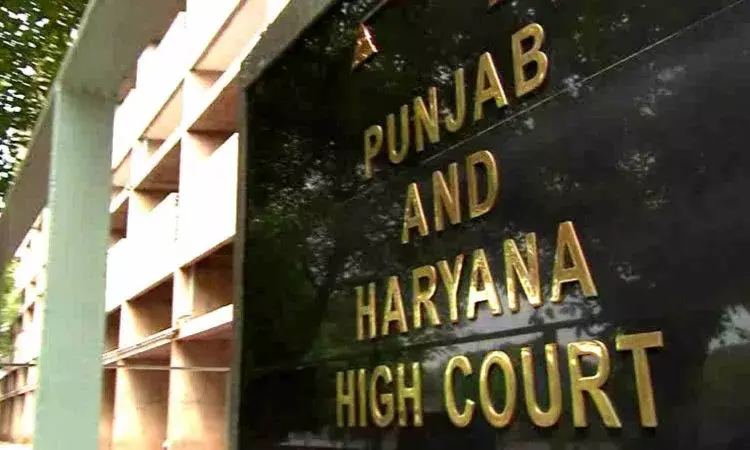- Home
- Medical news & Guidelines
- Anesthesiology
- Cardiology and CTVS
- Critical Care
- Dentistry
- Dermatology
- Diabetes and Endocrinology
- ENT
- Gastroenterology
- Medicine
- Nephrology
- Neurology
- Obstretics-Gynaecology
- Oncology
- Ophthalmology
- Orthopaedics
- Pediatrics-Neonatology
- Psychiatry
- Pulmonology
- Radiology
- Surgery
- Urology
- Laboratory Medicine
- Diet
- Nursing
- Paramedical
- Physiotherapy
- Health news
- Fact Check
- Bone Health Fact Check
- Brain Health Fact Check
- Cancer Related Fact Check
- Child Care Fact Check
- Dental and oral health fact check
- Diabetes and metabolic health fact check
- Diet and Nutrition Fact Check
- Eye and ENT Care Fact Check
- Fitness fact check
- Gut health fact check
- Heart health fact check
- Kidney health fact check
- Medical education fact check
- Men's health fact check
- Respiratory fact check
- Skin and hair care fact check
- Vaccine and Immunization fact check
- Women's health fact check
- AYUSH
- State News
- Andaman and Nicobar Islands
- Andhra Pradesh
- Arunachal Pradesh
- Assam
- Bihar
- Chandigarh
- Chattisgarh
- Dadra and Nagar Haveli
- Daman and Diu
- Delhi
- Goa
- Gujarat
- Haryana
- Himachal Pradesh
- Jammu & Kashmir
- Jharkhand
- Karnataka
- Kerala
- Ladakh
- Lakshadweep
- Madhya Pradesh
- Maharashtra
- Manipur
- Meghalaya
- Mizoram
- Nagaland
- Odisha
- Puducherry
- Punjab
- Rajasthan
- Sikkim
- Tamil Nadu
- Telangana
- Tripura
- Uttar Pradesh
- Uttrakhand
- West Bengal
- Medical Education
- Industry
Illegible Prescriptions Not Acceptable: Punjab and Haryana HC raps doctors

Punjab and Haryana High Court
Chandigarh: Slamming doctors for continuing to write illegible prescriptions despite access to computers, the Punjab and Haryana High Court has directed them to write in clear, bold capital letters until a comprehensive digital prescription system is established.
The court emphasised that patients have a fundamental right to receive clear and readable medical prescriptions, stressing that poor handwriting can directly impact a patient’s health and safety.
To prevent confusion, the court instructed the government to introduce handwriting training in medical curricula and to implement a nationwide digital system within two years. Until then, it directed doctors to write in bold, legible letters.
The directive was issued while hearing a criminal case that involved reviewing a medico-legal report. Justice Jasgurpreet Singh Puri, who was presiding over the matter, was shocked to find that not a single word in the report was legible.
“The conscience of the court was shaken by the fact that not a single word or letter in the report was legible," the judge noted, expressing concern for patients’ safety.
The issue surfaced during a bail hearing in a case involving allegations of rape, fraud, and forgery. Shocked by the poor handwriting, Justice Puri even attached a copy of the report to his order.
The court stressed that understanding medical instructions is a fundamental aspect of the right to life under Article 21 of the Constitution. It further declared that “doctors’ illegible handwriting constitutes a threat to patients’ lives and mandated that all prescriptions be written in large, clear capital letters until a comprehensive digital prescription system is established.”
Justice Puri criticised the continued dependence on handwritten prescriptions despite easy access to technology, calling it astonishing that government doctors still rely on a practice decipherable only to a few pharmacists, reports Law Chakra.
In his order, Justice Puri directed the government to ensure that medical students receive handwriting training as part of their curriculum and set a two-year time frame for digitised prescriptions to be widely adopted.
Responding to the court’s ruling, the Indian Medical Association (IMA) expressed willingness to cooperate. Dr Dilip Bhanushali, President of the IMA, told the BBC, “We are ready for a solution.”
He acknowledged that while urban hospitals and larger cities have largely adopted digital prescriptions, challenges remain in smaller towns and rural areas.
He remarked, “It’s a well-known fact that many doctors have poor handwriting, but that’s because most medical practitioners are very busy, especially in overcrowded government hospitals. We have recommended to our members to follow the government guidelines and write prescriptions in bold letters that should be readable to both patients and chemists. A doctor who sees seven patients a day can do it, but if you see 70 patients a day, you can’t do it.”
This is not the first time the state high court has raised concerns over illegible prescriptions. In several earlier cases, doctors were repeatedly advised to change their writing style, and courts in other states have also issued similar directions.
Also read- Punjab Mandates 48-Hour Deadline for Submission of Medico-Legal Reports
MA in Journalism and Mass Communication
Exploring and learning something new has always been her motto. Adity is currently working as a correspondent and joined Medical Dialogues in 2022. She completed her Bachelor’s degree in Journalism and Mass Communication from Calcutta University, West Bengal, in 2021 and her Master's in the same subject in 2025. She mainly covers the latest health news, doctors' news, hospital and medical college news. She can be contacted at editorial@medicaldialogues.in


